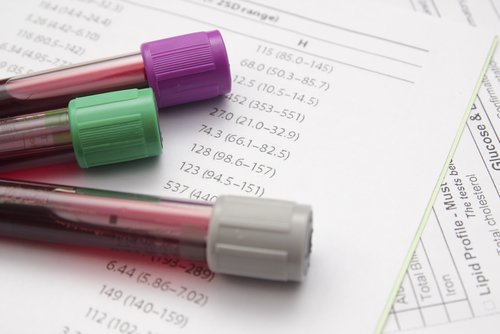GlycA Seen as Not a Good Indicator of Inflammation in SCD Patients, Study Shows
Written by |

GlycA, a biomarker for conditions linked to vascular inflammation, has been found to not be a reliable indicator of inflammation in patients with sickle cell disease (SCD) due to its inability to differentiate between acute pain crisis and their usual state of health, according to researchers.
The study, “GlycA is not a useful biomarker of inflammation in sickle cell disease,” was published in the International Journal of Laboratory Hematology.
Abnormal hemoglobin S in sickle cell disease results in chronic hemolysis (red blood cell destruction), leading to recurrent inflammation and worsening multiple organ damage.
Inflammation often accompanies acute vaso‐occlusive crisis, and so a specific and reliable biomarker would allow for a more accurate determination of sickle cell disease activity (acute crises vs. steady state, for example).
Glycoprotein acetylation (GlycA) is an inflammation biomarker and has been associated with disease activity in rheumatoid arthritis and lupus. Its effectiveness as a biomarker for sickle cell disease has been uncertain, however.
Researchers at the Sickle Cell Branch of the National Heart, Lung and Blood Institute in Bethesda, Maryland, reassessed GlycA levels in the stored plasma samples of sickle cell patients from two different clinical studies.
Patients were deemed to be in “steady state” when they were in their usual state of health, and “acute pain crisis” was determined when patients were hospitalized due to acute pain and treated with strong pain medications.
Plasma samples from patients in either state were available for analysis.
One of the studies (NCT00011648) included 488 patients with sickle cell disease and 52 healthy African Americans, while the second study (NCT03049475) included 12 sickle cell patients who were evaluated during steady state and in acute pain crisis.
Combining the two studies, samples from a total of 500 (47% women) patients were reanalyzed and compared with healthy controls. The mean age of the participants was 34.
Using nuclear magnetic resonance (NMR) spectroscopy, the researchers measured the levels of plasma GlycA in all the participants.
The mean plasma GlycA levels in sickle cell patients (324.6 μmol/L) was significantly lower compared to that of the healthy control group (386.3 μmol/L).
However, the plasma GlycA levels couldn’t differentiate between steady state (300.5 μmol/L) and acute pain crisis (314.2 μmol/L) in sickle cell patients because the values were not markedly different.
Researchers also noted that the levels of the other marker for inflammation, serum lactate dehydrogenase (LDH), in sickle cell patients did not respond in the same fashion as plasma GlycA levels, indicating unreliability.
Five acute-phase proteins — proteins that respond to inflammation — contribute to the GlycA signal.
Researchers said that one of those five proteins, haptoglobin (hemolysis defining protein), is unreliable due to its rapid degradation in sickle cell patients and supported the discrepancy between plasma GlycA and LDH level patterns.
“Plasma GlycA measurements in patients with SCD appear to be confounded by hemolysis. Further studies are warranted to identify a more specific biomarker of inflammation for this complex disorder,” the researchers wrote.




